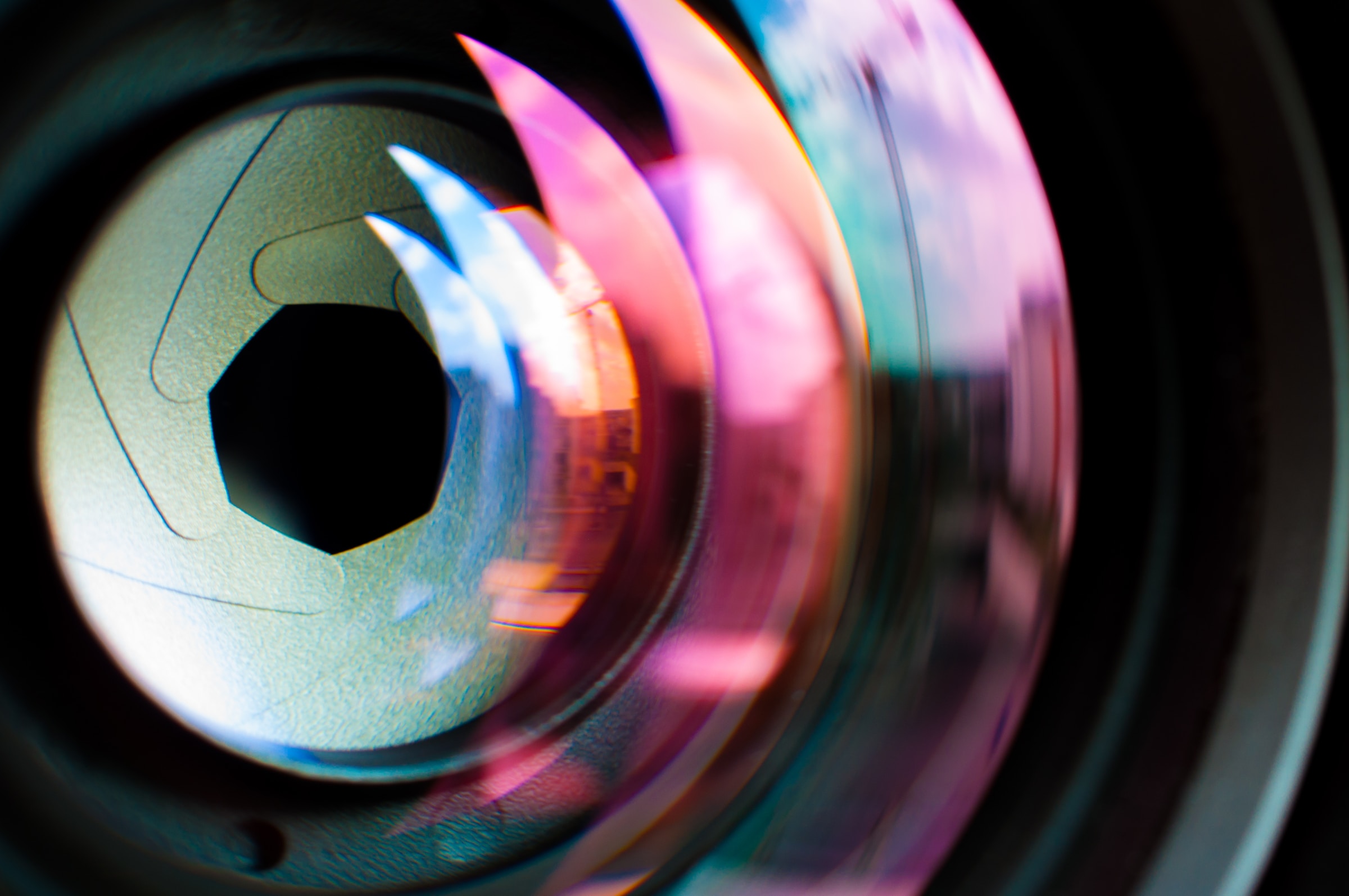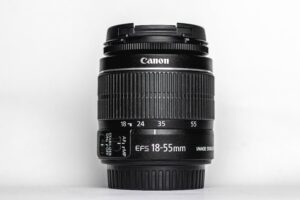When it comes to capturing stunning photographs, a camera lens plays a crucial role in the overall image quality.
However, scratches on camera lenses can be a common occurrence, which raises the question: Can you fix a scratched camera lens?
In this article, we will explore various methods and techniques to address this concern and provide you with the necessary information to make an informed decision.
| Repair Option | Description | Pros | Cons |
|---|---|---|---|
| DIY Methods | Various techniques using household items or commercially available products | Cost-effective, convenient, potential for minor scratch reduction | Limited effectiveness for deep scratches, risk of further damage if not used correctly |
| Camera Lens Repair Kits | Kits containing specialized tools and materials for lens repair | Comprehensive solution, cost-effective, learning opportunity | Skill and knowledge required, limitations for extensive damage |
| Professional Lens Repair | Repair services provided by experienced technicians at specialized facilities | Expertise and experience, specialized equipment, warranties or guarantees | Higher cost compared to DIY methods, may require shipping the lens, longer turnaround time |
Understanding Camera Lens Scratches
Camera lens scratches can occur due to various reasons, including accidental contact with abrasive surfaces, improper cleaning techniques, or general wear and tear.
These scratches have the potential to impact the quality of your photographs, causing blurriness, reduced contrast, or unwanted artifacts.
It is important to note that the severity of lens scratches can vary.
Superficial scratches may have minimal impact on image quality, while deeper scratches can be more challenging to address.
Before attempting any repairs, it is crucial to assess the extent of the damage and consider the potential risks involved.
To gain a better understanding of lens scratches and their impact, let’s explore their causes and the potential consequences they may have on your photography.
Common Causes of Lens Scratches
| Cause | Description |
|---|---|
| Abrasive surfaces | Accidental contact with rough or abrasive surfaces, such as sand or rocks |
| Improper cleaning | Using harsh or abrasive materials while cleaning the lens, like rough cloths or tissues |
| Lens cap mishandling | Carelessly placing or removing the lens cap, causing it to come into contact with the lens surface |
| General wear and tear | Regular use over time without proper protection or maintenance |
Lens scratches can occur due to various factors, including:
- Abrasive surfaces: Accidental contact with rough or abrasive surfaces, such as sand, rocks, or other hard objects, can lead to scratches on the lens surface.
- Improper cleaning: Using harsh or abrasive materials, like rough cloths or tissues, can cause scratches while cleaning the lens.
- Lens cap mishandling: Carelessly placing or removing the lens cap can result in accidental scratches if it comes into contact with the lens surface.
- General wear and tear: Over time, lenses can develop scratches through regular use, especially if not adequately protected or maintained.
Impact of Lens Scratches on Image Quality
Even minor scratches on a camera lens can affect image quality.
The impact can vary depending on the location, depth, and number of scratches. Potential consequences include:
- Reduced sharpness: Scratches can interfere with the lens’s ability to focus light accurately, leading to a loss of overall sharpness in the resulting images.
- Decreased contrast: Scratches may scatter light, reducing the contrast between different areas of the image and resulting in a loss of detail.
- Flare and ghosting: Deep scratches can cause unwanted reflections and flares, resulting in ghosting or hazy spots in the image.
- Artifacts and distortions: In some cases, scratches can introduce artifacts or distortions, such as lines, blurs, or color shifts, which can significantly impact the final image quality.
DIY Methods for Repairing Camera Lens Scratches
| DIY Method | Materials Needed | Pros | Cons |
|---|---|---|---|
| Polishing with Toothpaste | Toothpaste (non-gel formula) | Cost-effective, readily available, can reduce the appearance of minor scratches | Limited effectiveness for deeper or more severe damage, risk of applying excessive pressure |
| Baking Soda and Water | Baking soda, water | Cost-effective, can minimize the appearance of minor scratches | Limited effectiveness for deeper or more severe damage, risk of applying excessive pressure |
| Scratch Remover Solution | Scratch remover solution | Specifically designed for camera lenses, can minimize the appearance of scratches | May require additional tools or materials, limited effectiveness for deeper or more severe damage |
| Microfiber Cloth and Rubbing Alcohol | Microfiber cloth, rubbing alcohol | Can remove minor scratches, readily available materials | Limited effectiveness for deeper or more severe damage, risk of using excessive rubbing alcohol |
When faced with a scratched camera lens, some photographers may consider attempting DIY methods to restore its clarity.
While these methods can be effective for minor scratches, it is important to proceed with caution and understand the limitations of each approach.
Let’s explore some common DIY methods for repairing camera lens scratches:
1. Polishing with Toothpaste
One popular DIY technique involves using toothpaste to polish out minor scratches on the lens surface.
Here’s a step-by-step guide to help you through the process:
- Start by cleaning the lens with a microfiber cloth to remove any dust or debris.
- Apply a small amount of toothpaste (non-gel formula) to the scratched area.
- Gently rub the toothpaste onto the scratch in a circular motion using a clean, soft cloth.
- Continue rubbing for a few minutes, periodically checking the progress.
- Once satisfied, clean the lens with a microfiber cloth and inspect the results.
It’s important to note that this method is suitable for minor scratches only and may not be effective for deeper or more severe damage.
Please note: exercise caution to avoid applying excessive pressure, as it may further damage the lens coating.
2. Using Baking Soda and Water
Another DIY method involves creating a paste using baking soda and water to buff out minor scratches.
- Create a paste by mixing baking soda with a small amount of water until it forms a thick consistency.
- Clean the lens with a microfiber cloth to remove any dirt or debris.
- Apply the baking soda paste to the scratched area, using a soft cloth or cotton swab.
- Gently rub the paste onto the scratch in a circular motion for a few minutes.
- Rinse the lens with clean water and dry it with a microfiber cloth.
While this method may help reduce the appearance of minor scratches, it is important to exercise caution and avoid excessive pressure to prevent further damage to the lens.
3. Applying a Scratch Remover Solution
There are commercially available scratch remover solutions specifically designed for camera lenses.
These solutions often contain a mild abrasive compound that helps to minimize the appearance of scratches.
Here’s how you can use a scratch remover solution:
- Clean the lens with a microfiber cloth to ensure it is free from dust and debris.
- Apply a small amount of the scratch remover solution to a clean, soft cloth.
- Gently rub the cloth onto the scratched area in a circular motion.
- Continue rubbing for a few minutes, periodically inspecting the progress.
- Once satisfied, clean the lens with a microfiber cloth to remove any residue.
It is important to follow the manufacturer’s instructions and use the solution sparingly. Avoid applying excessive pressure and thoroughly clean the lens after the process.
4. Using a Microfiber Cloth and Rubbing Alcohol
In some cases, a combination of a microfiber cloth and rubbing alcohol can help remove minor scratches.
- Clean the lens with a microfiber cloth to remove any dirt or debris.
- Dampen a clean microfiber cloth with a small amount of rubbing alcohol.
- Gently rub the cloth onto the scratched area in a circular motion.
- Continue rubbing for a few minutes, periodically checking the progress.
- Once satisfied, clean the lens with a dry microfiber cloth to remove any residue.
Exercise caution to avoid using excessive amounts of rubbing alcohol, as it may damage lens coatings.
Additionally, ensure that the cloth is clean and free from any abrasive particles.
While these DIY methods can be effective for minor scratches, it is important to note that they may not completely eliminate deeper or more severe damage.
In such cases, alternative options such as camera lens repair kits or professional services may be more suitable.
Alternative Methods for Lens Repair
While DIY methods can be effective for minor scratches, there are alternative options available for more extensive lens repair.
Let’s explore two popular alternatives: camera lens repair kits and professional lens repair services.
Camera Lens Repair Kits
Camera lens repair kits are readily available in the market and often include specialized tools and materials to address lens scratches.
These kits typically come with detailed instructions to guide users through the repair process.
Here’s an overview of what you can expect from camera lens repair kits:
- Tools and materials: Repair kits may include items such as lens polishing compounds, microfiber cloths, lens cleaning solutions, and specialized applicators.
- Step-by-step instructions: Most kits provide detailed instructions on how to use the included tools and materials to repair lens scratches.
- Pros of using kits:
- Convenience: Repair kits offer a comprehensive solution in one package, eliminating the need to source individual components.
- Cost-effective: Repairing the lens yourself with a kit can be more affordable compared to professional services.
- Learning opportunity: Using a repair kit allows you to gain hands-on experience and learn about lens maintenance and repair.
- Cons of using kits:
- Skill and knowledge required: Repairing a camera lens using a kit requires a certain level of technical skill and understanding of lens mechanics.
- Limitations: Kits may not be suitable for extensive or deep scratches, and there is a risk of causing further damage if not used correctly.
Before using a camera lens repair kit, carefully read the instructions and assess the severity of the scratches. It is essential to understand the limitations of the kit and determine if the damage is within your capabilities to repair.
Popular Camera Lens Repair Kits
Professional Lens Repair Services
For more complex or severe lens damage, professional lens repair services can provide expert assistance.
Here are some considerations when opting for professional repair:
- When to consider professional assistance: Professional repair services are recommended for deep scratches, lens element misalignment, or internal damage that requires specialized equipment or expertise.
- Cost considerations: Professional repair services typically involve a higher cost compared to DIY methods or repair kits. The cost can vary depending on the extent of the damage, the lens model, and the service provider.
- Benefits of professional repair:
- Expertise and experience: Professional technicians have the knowledge and skills to handle complex repairs and ensure the lens is restored to optimal condition.
- Specialized equipment: Repair facilities are equipped with specialized tools and calibration equipment to accurately diagnose and repair lens issues.
- Warranty and guarantees: Reputable repair services often provide warranties or guarantees on their work, offering peace of mind.
If you decide to opt for professional repair, research reputable service providers, read reviews, and inquire about their repair process and warranty policies.
Assess the cost and weigh it against the value of the lens and the extent of the damage.
Preventive Measures for Avoiding Lens Scratches
Prevention is always better than cure when it comes to camera lens scratches.
By implementing proper lens care and maintenance practices, you can minimize the risk of scratches and prolong the lifespan of your lenses.
Let’s explore some preventive measures you can take:
Proper Lens Care and Maintenance
Cleaning Techniques for Preventing Scratches
When cleaning your camera lens, follow these guidelines to avoid causing scratches:
- Use a blower or brush to remove loose dust and debris before using any cleaning solution.
- Use a microfiber cloth or lens cleaning tissue specifically designed for camera lenses.
- Apply lens cleaning solution sparingly and avoid using excessive pressure.
- Gently wipe the lens surface in a circular motion, starting from the center and moving outward.
- Avoid using rough materials or abrasive substances that can scratch the lens.
Storing Lenses Safely to Minimize Damage
Proper storage can help protect your lenses from scratches and other potential damage. Consider the following tips:
- Always use lens caps or covers when not in use to shield the lens from accidental contact.
- Store lenses in a clean and dry environment, preferably in a padded camera bag or lens case.
- Use dividers or lens pouches to keep lenses separate and prevent them from rubbing against each other.
- Avoid storing lenses in extreme temperatures or high humidity, as it can lead to lens damage.
By adopting these preventive measures, you can significantly reduce the risk of lens scratches and maintain the optical performance of your camera lenses.
Conclusion
In conclusion, camera lens scratches can be a frustrating issue for photographers. It is crucial to evaluate the severity of the scratches, consider the available options, and choose the most suitable method based on your specific situation.
Whether you decide to attempt a DIY repair, opt for a repair kit, or seek professional assistance, always handle your camera lenses with care to prevent scratches and maintain their optimal performance.








